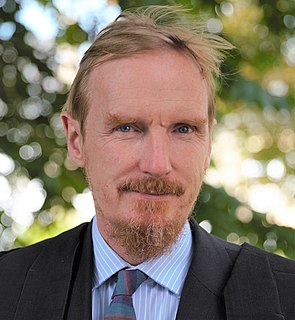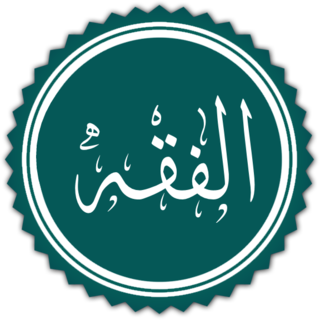
A mosque, also called masjid, is a place of prayer for Muslims. Mosques are usually covered buildings, but can be any place where prayers (sujud) are performed, including outdoor courtyards.

Islamic art is a part of Islamic culture and encompasses the visual arts produced since the 7th century CE by people who lived within territories inhabited or ruled by Muslim populations. Referring to characteristic traditions across a wide range of lands, periods, and genres, Islamic art is a concept used first by Western art historians since the late 19th century. Public Islamic art is traditionally non-representational, except for the widespread use of plant forms, usually in varieties of the spiralling arabesque. These are often combined with Islamic calligraphy, geometric patterns in styles that are typically found in a wide variety of media, from small objects in ceramic or metalwork to large decorative schemes in tiling on the outside and inside of large buildings, including mosques. Other forms of Islamic art include Islamic miniature painting, artefacts like Islamic glass or pottery, and textile arts, such as carpets and embroidery.
Highgrove House is the family residence of the Prince of Wales and the Duchess of Cornwall. It lies southwest of Tetbury in Gloucestershire, England. Built in the late 18th century, Highgrove and its estate were owned by various families until it was purchased in 1980 by the Duchy of Cornwall from Maurice Macmillan. The Prince of Wales remodelled the Georgian house with neo-classical additions in 1987. The duchy manages the estate and the nearby Duchy Home Farm.

Islam is one of the two main religions practised in Bosnia and Herzegovina, the other one being Christianity. It was introduced to the local population in the 15th and 16th centuries as a result of the Ottoman conquest of Bosnia and Herzegovina.

Islam is the official state religion in Tunisia. According to CIA, 99.1% of its adherents are Sunni Muslims. The constitution of Tunisia states that the country's “religion is Islam”, the government is the “guardian of religion”, and requires that the president be Muslim. The predominant madhhab in the country is the Maliki school. The Tunisian island of Djerba is home to a population of Ibadi Muslims.

Islam is now the second largest religion in the United Kingdom of Great Britain and Northern Ireland, with results from the United Kingdom 2011 Census giving the UK Muslim population in 2011 as 2,516,000, 4.4% of the total population, while more recent Office of National Statistics sources have it in 2018 as 3,372,966 in Great Britain alone. The vast majority of Muslims in the United Kingdom live in England: 2,660,116. 76,737 Muslims live in Scotland (1.45%), 45,950 in Wales (1.50%). London has the greatest population of Muslims in the country. The vast majority of Muslims in United Kingdom adhere to Sunni Islam, while smaller numbers are associated with Shia Islam.

Abdal Hakim Murad, is an English academic, theologian and Islamic scholar who is a leading proponent of Islamic neo-traditionalism. His work includes publications on Islamic theology, modernity, and Anglo-Muslim relations, and he has translated several Islamic texts.

Islam is the second-largest religion in Europe after Christianity. Although the majority of Muslim communities in Western Europe formed recently, there are centuries-old Muslim societies in the Balkans, Caucasus, Crimea, and Volga region, such as Slavic Muslims, Muslim populations of Albanians, Greeks, Romani, Balkan Turks, Pomaks, Bosniaks, Yörüks, Volga Tatars, Crimean Tatars, Kazakhs, and Megleno-Romanians from Notia are today living in Turkey. The term "Muslim Europe" is used to refer to the Muslim-majority countries in the Balkans and parts of countries in Eastern Europe with sizable Muslim minorities that constitute large populations of native European Muslims, although the majority are secular.

The Grand Mosque of Paris, also known as the Great Mosque of Paris or simply the Paris Mosque, is located in the 5th arrondissement and is one of the largest mosques in France. There are prayer rooms, an outdoor garden, a small library, a gift shop, along with a cafe and restaurant. In all the mosque plays an important role in promoting the visibility of Islam and Muslims in France. It is the oldest mosque in Metropolitan France.

Africa was the first continent into which Islam spread from Southwest Asia, during the early 7th century CE. Almost one-third of the world's Muslim population resides in Africa. Muslims crossed current Djibouti and Somalia to seek refuge in present-day Eritrea and Ethiopia during the Hijrah to the Christian Kingdom of Aksum. Like the vast majority (90%) of Muslims in the world, most Muslims in Africa are also Sunni Muslims; the complexity of Islam in Africa is revealed in the various schools of thought, traditions, and voices in many African countries. Many African ethnicities, mostly in North, West and East Africa consider Islam their Traditional religion. The practice of Islam on the continent is not static and is constantly being reshaped by prevalent social, economic, and political conditions. Generally Islam in Africa often adapted to African cultural contexts and belief systems forming Africa's own orthodoxies.

The experiences of Muslim women vary widely between and within different societies. At the same time, their adherence to Islam is a shared factor that affects their lives to a varying degree and gives them a common identity that may serve to bridge the wide cultural, social, and economic differences between them.

Gender segregation in Islamic law, custom, law and traditions refers to the practices and requirements in Islamic countries and communities for the separation of men and boys from women and girls in social and other settings. Scholars differ as to whether the Qur'an requires gender segregation, and, if so, the hadith that require it. There are diverging opinions among experts in Islamic theology concerning gender segregation. However in countries like Saudi Arabia, Iraq, Iran, etc. with high Muslim population sex segregation has been executed since old times.

Islam is an Abrahamic monotheistic religion centred primarily around the Quran, a religious text that is considered by Muslims to be the direct word of God as it was revealed to Muhammad, the main and final Islamic prophet. It is the world's second-largest religion behind Christianity, with more than two billion followers comprising around 25 percent of the global population. Islam teaches that God is merciful, all-powerful, and unique, and has guided humanity through various prophets, revealed scriptures, and natural signs, with the Quran serving as the final, universal revelation and Muhammad serving as the "Seal of the Prophets". The teachings and practices of Muhammad (sunnah) documented in traditional collected accounts (hadith) provide a secondary constitutional model for Muslims to follow after the Quran.

The bibliography of Charles, Prince of Wales, is a list of approximately three dozen works which the Prince has written, co-written, illustrated or narrated, and includes works for which he has written a foreword, introduction or preface.

The East London Mosque (ELM) is situated in the London Borough of Tower Hamlets between Whitechapel and Aldgate East. Combined with the adjoining London Muslim Centre and Maryam Centre, it is one of the largest mosques in Europe accommodating more than 7,000 worshippers for congregational prayers. The mosque was one of the first in the UK to be allowed to use loudspeakers to broadcast the adhan.
Islam has become the second largest religion in England, after Christianity. Most Muslims are immigrants from South Asia or descendants of immigrants from that region. Many others are from Muslim-dominated regions such as the Middle East, Afghanistan, Malaysia and Somalia, and other parts of African countries such as Nigeria, Uganda and Sierra Leone. There are also many Caucasian Muslims in the country, of which most have Slavic and Balkan backgrounds, as well as ethnic English converts.

The Fazl mosque also known as The London mosque, is the first purpose-built mosque in London, England. It was opened on 23 October 1926 in Southfields, Wandsworth. At a cost of £6,223, the construction of the place and the purchase of the land on which it stands, was financed by the donations of Muslims with support from the British Muslim convert Khalid Sheldrake. Between 1984 and 2019 the Fazl Mosque was the residence of the caliphs of the Ahmadiyya Muslim Community, and therefore its de facto international headquarters. The administrative headquarters now lies at the site of the Islamabad, Tilford.

The Khalili Foundation is a UK-based organisation focused on fostering Jewish - Christian - Muslim interfaith and intercultural understanding through art, culture and education.

Bengali Muslims are adherents of Islam who ethnically, linguistically and genealogically identify as Bengalis. Comprising about two-thirds of the global Bengali population, they are the second-largest ethnic group among Muslims after Arabs. Bengali Muslims make up the majority of Bangladesh's citizens, and are the largest minority in the Indian states of West Bengal, Tripura and Assam

The Cambridge Central Mosque is Europe's first eco-friendly mosque and the first purpose-built mosque within the city of Cambridge, England. Its mandate is to meet the needs of the Muslim community in the UK and beyond by facilitating good practice in faith, community development, social cohesion & interfaith dialogue. The Cambridge Central Mosque was opened to the public on 24 April 2019.















